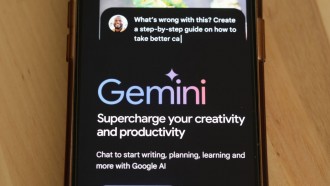What happens when you shine a laser on a bit of gallium arsenide (GaAs)? Scientists were expecting something to happen but they didn't think they would discover a new type of quasiparticle in the process.
The new quasiparticle, which scientists have lovingly named as the "dropleton," behaves in a strange manner that is very similar to a droplet of liquid. Unlike normal liquids however, the quantum droplets produced during the experiment contained charges particles. The charged particles included "holes" that hold a positive charge and electrons that hold a negative charge. The positively-charged "holes" are generated when the GaAs electrons were excited by the laser causing the formation of "bubbles." The results of the experiment came as a surprise to the researchers who were expecting something else to happen.
"But the experiment didn't behave at all in the way we expected," said Andrew Hunter, a graduate student working at the Cundiff Laboratory in the University of Colorado Boulder. "We expected to see the energy of the biexcitons increase as the laser generated more electrons and holes. But, what we saw when we did the experiment was that the energy actually decreased!"
The Cundiff group that conducted the experiment, was originally attempting to investigate the effects of lasers on biexcitons, which are particles made up of two excitons. Exitons are another type of quasiparticle that are very similar to hydrogen atoms. Unlike hydrogen atoms, however, an exciton contains a hole and an electron. The scientists were surprised by the fact that they detected an energy decrease in the experiment, which meant they weren't actually looking at excitons.
While studying the mysterious and unexpected results of the experiments, the German researchers, who were collaborating with the Cundiff team, suggested that the team was able to produce something that has never been seen before: a quantum droplet, which was later renamed as a "dropleton." These dropletons are quantum structures consisting of a number of electrons and holes.
Unlike excitons, which contain pairs of holes and electrons, the holes and electrons in a dropleton are not bound together in distinct pairs. Instead of one electron interacting with a paired positively charged hole, the electrons in a dropleton could freely interact with any hole and they do so equally.
Once again, scientists have proven that landmark discoveries can be made due to unexpected results and fortuitous incidents. The discovery was published in the latest issue of the online journal Nature.








